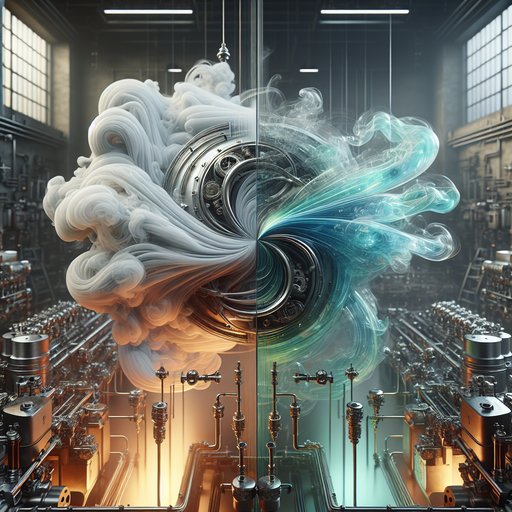
Homogeneous Charge Compression Ignition (HCCI) and Reactivity Controlled Compression Ignition (RCCI) pursue the same goal—diesel-like efficiency with ultra-low NOx and soot—via different control levers. HCCI relies on autoignition of a near-homogeneous, typically lean charge; RCCI layers fuel reactivity in-cylinder using two fuels to steer when and where heat is released. Their feasibility hinges on fuel chemistry (octane/cetane), temperature and dilution windows, and how precisely phasing can be managed. The comparison below highlights control difficulty, usable load/speed range, temperature sensitivity, and hybrid blending strategies that bridge to more conventional spark-ignition (SI), diesel, and partially premixed combustion modes.
The core distinction: HCCI uses a single, premixed charge whose autoignition timing is governed by mixture temperature, pressure, and chemistry; RCCI adds in-cylinder reactivity stratification using a low-reactivity fuel (e.g., gasoline, natural gas, ethanol) largely premixed, and a high-reactivity fuel (e.g., diesel) injected late to trigger and shape combustion. Both target high efficiency via rapid, low-temperature heat release that suppresses NOx formation and soot. Fuel reactivity sets the baseline. Gasoline (RON 91–100, MON 82–90) is low-reactivity; diesel (cetane 45–55) is high-reactivity.
Gasoline HCCI often uses higher compression ratios (CR 12–16) with residual trapping and intake heating; diesel-based HCCI/PCCI typically uses CR 14–17 with heavy EGR to temper reactivity. RCCI can run conventional diesel hardware (CR 15–17) while adding port fuel of low reactivity; the high-reactivity direct-injection (DI) pilot tunes start of combustion (SOC). HCCI control challenge: the ignition delay is an exponential function of temperature and pressure. Achieving phasing near top dead center (TDC) demands tight control of in-cylinder temperature using 30–60% cooled EGR, intake temperature ~50–120 C, and variable valve timing (e.g., negative valve overlap to trap hot residuals).
Typical gasoline HCCI runs lean (lambda 1.5–2.5), with peak pressure 60–90 bar and pressure rise rate constrained to ~10–15 bar/ms to limit ringing. The viable load window is narrow: roughly 2–6 bar IMEP for gasoline HCCI and 3–8 bar IMEP for diesel HCCI/PCCI, depending on speed. Below this, misfire and high CO/HC dominate; above it, ringing and wall heat losses escalate. RCCI broadens control authority.
With 60–95% of energy from the low-reactivity fuel premixed by PFI (or early DI) and the remainder from a late-in-cycle high-reactivity DI pilot, phasing is set by pilot timing/quantity and overall reactivity gradient, not solely by bulk temperature. Cooled EGR (20–40%) and boost further temper pressure rise. RCCI has demonstrated IMEP up to ~12–18 bar in light-duty hardware with indicated efficiencies 45–50% (brake ~38–42%), NOx below 0.1 g/kWh, and near-zero soot due to premixing. Constraints include dual-fuel hardware, precise mixture preparation, and elevated CO/HC (especially at light load) requiring a robust oxidation catalyst; SCR becomes optional if NOx is consistently minimal.
Gasoline vs diesel within each concept: Gasoline HCCI needs strong thermal/valve authority to overcome low reactivity; intake heating and residuals help reach an autoignition temperature window near 700–900 K at SOC. Diesel HCCI (often called PCCI) relies on very early injections and high EGR to suppress local equivalence ratio and temperature, but spray-wall interactions become a soot risk if mixing time is insufficient. For RCCI, gasoline–diesel is common: gasoline PFI (lambda 1.3–2.0) with a small diesel DI pilot (5–30% energy) manages SOC across a wider load/speed range than HCCI and reduces sensitivity to ambient temperature. Variants like gasoline compression ignition (GCI) or partially premixed combustion (PPC) use single-fuel reactivity tailoring (e.g., low-octane gasoline/naptha at CR 15–17) to emulate RCCI-like phasing while keeping a single tank; stoichiometric GCI with high EGR (lambda ≈ 1, EGR 25–35%) can enable a three‑way catalyst and simplify aftertreatment.
Hybrid blending strategies mitigate each mode’s limits. Mode switching (SI at idle/high load, HCCI in mid-load, PPC/GCI as an intermediate) smooths torque and keeps pressure rise rates within NVH limits. Spark- or diesel-assisted HCCI uses a small ignition kernel to stabilize cold start and transients. Reactivity blending via fuels—e.g., gasoline with 5–20% diesel pilot in RCCI, or gasoline–ethanol mixtures to dial octane—widens the thermal window.
Multi-pulse DI, variable swirl/tumble, and fast thermal management (electric heaters, active EGR cooling) further extend operability. Electrified hybrids exploit steady-state operation: the engine can hold an HCCI/RCCI-friendly island (e.g., 3–6 bar BMEP, 1800–2400 rpm) while the battery buffers transients. Implications: Both concepts slash engine-out NOx and soot, but raise CO/HC and demand precise thermal control. HCCI is simpler on paper (single fuel) yet has a narrow map and tough cold-start/transient control; RCCI offers broader load coverage and finer phasing authority at the cost of dual-fuel complexity.
Reliability hinges on containing pressure rise rates and peak cylinder pressures (target <160 bar light-duty) to protect bearings and head gaskets. Cost reflects added actuators (VVT, EGR cooling, sensors) and, for RCCI, dual-fuel delivery. Drivability depends on smooth mode transitions; with careful torque shaping and fast actuators, real-world performance is strong, with diesel-like efficiency and gasoline-like response while meeting tight standards such as Euro 7 with simpler aftertreatment configurations.












